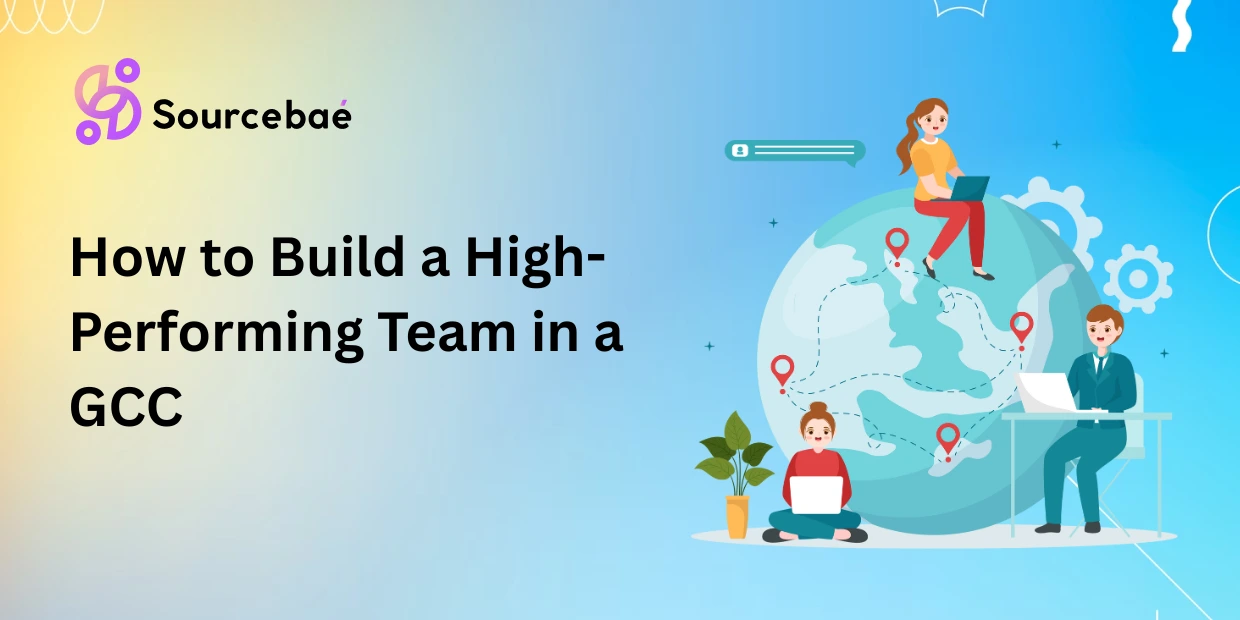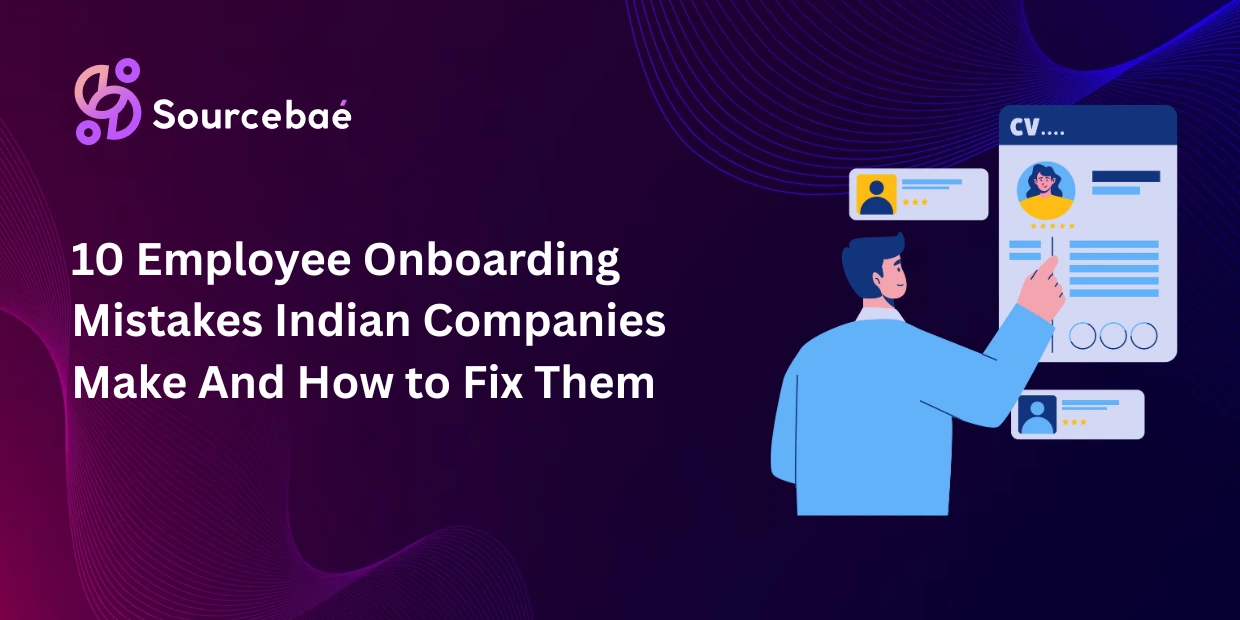Building a high-performing team in a Global Capability Center (GCC) requires more than just assembling skilled professionals. It demands a strategic approach that combines talent acquisition, cultural integration, and performance optimization to create a cohesive unit that delivers exceptional value to the parent organization. As GCCs evolve from cost centers to strategic innovation hubs, the ability to build and sustain high-performing teams has become critical for success.
Understanding the GCC Team Landscape
The Evolution of GCC Teams
Global Capability Centers have transformed dramatically over the past decade. Modern GCCs serve as second headquarters for organizations, handling core business functions, driving innovation, and supporting global strategic objectives. This evolution requires teams that can operate at the highest levels of performance while maintaining alignment with global business goals.
Today’s high-performing GCC teams are characterized by their ability to work seamlessly across cultures, time zones, and business functions. They possess both deep technical expertise and strong business acumen, enabling them to contribute meaningfully to strategic initiatives.
Key Components of High-Performing GCC Teams
Successful GCC teams share several critical characteristics that distinguish them from traditional service delivery teams:
Strategic Alignment: Every team member understands how their work contributes to broader organizational objectives[7][8]. This alignment ensures that daily activities support long-term business goals and creates a sense of purpose that drives engagement.
Cross-Functional Collaboration: High-performing teams break down silos and foster collaboration across different functions and expertise areas. This approach enables comprehensive problem-solving and accelerates innovation.
Cultural Integration: Effective teams blend local insights with global perspectives, creating a unique cultural identity that respects diversity while maintaining organizational coherence.
Strategic Talent Acquisition Framework
Building a Comprehensive Talent Strategy
The foundation of any high-performing GCC team lies in strategic talent acquisition that goes beyond traditional hiring practices. Organizations must develop a talent strategy that aligns with their long-term vision for the GCC, focusing on capabilities needed not just today but 3-5 years in the future[6][10].
Future-Focused Recruitment: Instead of hiring purely for immediate needs, successful GCCs recruit talent that can scale with the organization’s evolving requirements. This approach involves identifying candidates with adaptability, learning agility, and growth potential alongside technical expertise.
Employer Value Proposition (EVP): Companies with strong EVPs see 69% lower attrition rates. GCCs must articulate what makes them unique employers, highlighting opportunities for career growth, global exposure, and meaningful work that impacts the parent organization’s success.
Competitive Talent Acquisition Strategies
In today’s competitive market, GCCs must employ sophisticated strategies to attract top talent:
Multi-Channel Sourcing: Successful GCCs utilize diverse recruitment channels, from campus partnerships to professional networks and digital platforms. This multi-pronged approach ensures access to the broadest possible talent pool.
Data-Driven Recruitment: Analytics play a crucial role in modern talent acquisition. GCCs should track metrics such as cost-per-hire, time-to-fill, and source effectiveness to optimize their recruitment processes.
Skills-Based Hiring: Rather than focusing solely on experience, high-performing GCCs emphasize skills assessment and potential. This approach helps identify candidates who can grow into roles and adapt to changing requirements.
Diversity and Inclusion as Competitive Advantage
Diverse teams are 35% more likely to outperform their competitors. GCCs benefit from their inherently diverse environments, but must actively cultivate inclusion to maximize this advantage:
Inclusive Recruitment Practices: Implement structured interview processes that minimize bias and ensure equitable evaluation of all candidates. This includes diverse interview panels and standardized assessment criteria.
Cultural Competency: Team members should be equipped with cultural intelligence to work effectively across global teams. This skill becomes particularly important as GCCs take on more strategic roles requiring close collaboration with global stakeholders.
Organizational Design and Structure
Creating Effective Team Architecture
The structure of GCC teams significantly impacts their performance. Successful GCCs adopt organizational designs that promote both efficiency and innovation while maintaining clear accountability.
Flat Hierarchies: High-performing GCC teams often feature flatter organizational structures that enable faster decision-making and greater employee empowerment This approach reduces bureaucracy and encourages innovation at all levels.
Center of Excellence Model: Many successful GCCs establish Centers of Excellence (CoEs) that serve as knowledge hubs for specific domains. These centers drive standardization while fostering deep expertise development.
Cross-Functional Teams: The most effective GCC teams combine members from different functional areas to tackle complex challenges. This structure promotes knowledge sharing and ensures comprehensive problem-solving approaches.
Leadership Development and Empowerment
Strong leadership is fundamental to team performance in GCCs. Leaders must balance local operational needs with global strategic requirements while fostering a culture of continuous improvement.
CEO Mindset: GCC leaders should think like CEOs rather than operational managers. This mindset shift involves understanding business fundamentals, financial implications, and competitive dynamics that affect the parent organization.
Local Leadership Development: Investing in strong local leaders who understand global expectations while bringing regional insights is crucial. These leaders serve as bridges between global strategy and local execution.
Empowerment Culture: High-performing teams require leaders who empower their members to make decisions and take ownership of their work. This empowerment fosters accountability and drives engagement across the team.
Performance Management and Measurement
Establishing Effective KPIs
Measuring team performance in GCCs requires metrics that go beyond traditional cost savings to capture strategic value creation.
Strategic Value Metrics: Track how the GCC contributes to overall business objectives, including innovation projects, process improvements, and revenue generation. These metrics demonstrate the strategic impact of the team’s work.
Operational Excellence Indicators: Monitor key operational metrics such as process cycle time, service level agreements, and error rates. These indicators ensure that quality standards are maintained while pursuing strategic objectives.
Employee Engagement Measures: Regular measurement of employee satisfaction, retention rates, and engagement levels provides insights into team health and sustainability.
Continuous Performance Optimization
High-performing GCC teams embrace continuous improvement as a core principle:
Regular Performance Reviews: Implement structured review processes that provide meaningful feedback and development opportunities. These reviews should focus on both individual performance and team contribution to strategic objectives.
Skills Gap Analysis: Regularly assess the team’s capabilities against future requirements to identify development needs. This proactive approach ensures the team remains relevant and valuable.
Innovation Metrics: Track the team’s contribution to innovation through metrics such as the number of ideas generated, patents filed, or process improvements implemented.
Cultural Integration and Development
Building a Cohesive Team Culture
Creating a strong team culture in a GCC requires intentional effort to blend global and local perspectives while fostering shared values and objectives.
Shared Purpose: High-performing teams have a clear understanding of their mission and how it contributes to the parent organization’s success. This shared purpose creates alignment and drives collective effort toward common goals.
Cultural Bridge Building: Successful GCCs establish mechanisms for cross-cultural collaboration and understanding. This includes regular interaction between GCC teams and global counterparts, cultural training programs, and shared celebrations of achievements.
Innovation Culture: Foster an environment where team members feel safe to experiment, fail, and learn. This psychological safety is essential for innovation and continuous improvement.
Communication and Collaboration Excellence
Effective communication forms the backbone of high-performing GCC teams:
Transparent Communication: Establish clear communication channels and ensure information flows freely across the team. Transparency builds trust and enables informed decision-making at all levels.
Cross-Functional Collaboration: Create opportunities for team members from different functions to work together on projects. This collaboration breaks down silos and promotes knowledge sharing.
Global Integration: Maintain regular communication with global teams to ensure alignment and shared understanding of objectives. This integration is crucial for teams that support global business functions.
Technology and Infrastructure Excellence
Digital Foundation for High Performance
Modern GCC teams require robust technological infrastructure to operate effectively in a global environment.
Advanced Technology Stack: Implement cutting-edge tools and platforms that enable efficient collaboration, data analysis, and process automation. This technological foundation supports team productivity and innovation.
Data-Driven Decision Making: Equip teams with the tools and training needed to make data-driven decisions. This capability is essential for teams that support strategic business functions.
Automation and AI Integration: High-performing teams leverage automation and artificial intelligence to enhance their capabilities and focus on high-value activities.
Security and Compliance Framework
GCC teams must operate within robust security and compliance frameworks that protect organizational assets while enabling innovation:
Security Protocols: Implement comprehensive security measures that protect sensitive data and intellectual property. These protocols must balance security with operational efficiency.
Compliance Management: Ensure that team activities comply with relevant regulations and organizational policies. This compliance framework provides the foundation for sustainable operations.
Retention and Engagement Strategies
Creating an Engaging Work Environment
Retaining top talent in competitive markets requires creating an environment where team members feel valued, challenged, and supported.
Career Development Pathways: Provide clear career progression opportunities that enable team members to grow within the organization. These pathways should include both vertical advancement and lateral development opportunities.
Learning and Development: Invest in continuous learning programs that help team members stay current with industry trends and develop new capabilities. This investment demonstrates the organization’s commitment to employee growth.
Work-Life Balance: Implement policies and practices that support healthy work-life balance. This balance is crucial for maintaining long-term employee engagement and preventing burnout.
Recognition and Rewards Systems
Effective recognition programs acknowledge both individual achievements and team contributions:
Multi-Level Recognition: Implement recognition systems that operate at multiple levels, from peer recognition to formal awards. This comprehensive approach ensures that contributions are acknowledged at all levels.
Performance-Based Rewards: Align rewards with performance outcomes that matter to the organization. This alignment ensures that recognition reinforces desired behaviors and outcomes.
Innovation Recognition: Specifically recognize and reward innovative thinking and problem-solving. This recognition encourages continued innovation and creative thinking.
Continuous Improvement and Adaptation
Agility and Responsiveness
High-performing GCC teams must remain agile and responsive to changing business needs and market conditions.
Adaptive Capacity: Build teams that can quickly adapt to new requirements, technologies, and business models. This adaptability is crucial in today’s rapidly changing business environment.
Continuous Learning Culture: Foster a culture where learning and improvement are continuous processes rather than discrete events. This culture ensures that teams remain current and effective.
Feedback Loops: Establish mechanisms for regular feedback from stakeholders, customers, and team members. This feedback drives continuous improvement and ensures alignment with stakeholder needs.
Future-Proofing Team Capabilities
Successful GCC teams prepare for future challenges and opportunities through strategic capability development:
Emerging Technology Skills: Invest in developing capabilities in emerging technologies such as artificial intelligence, machine learning, and automation. These skills will be crucial for future competitiveness.
Business Acumen Development: Help team members develop broader business understanding that enables them to contribute more strategically. This development transforms technical experts into business partners.
Leadership Pipeline: Develop a strong pipeline of future leaders who can guide the team through future challenges and opportunities. This pipeline ensures continuity and sustained performance.
Conclusion: Building Your High-Performing GCC Team
Building a high-performing team in a GCC requires a comprehensive approach that addresses talent acquisition, organizational design, performance management, and cultural development. Success depends on creating an environment where talented individuals can collaborate effectively, innovate continuously, and contribute meaningfully to global business objectives.
The key to success lies in viewing team building as a strategic imperative rather than an operational necessity. Organizations that invest in developing truly high-performing GCC teams will find themselves better positioned to compete in the global marketplace, drive innovation, and achieve sustainable growth.
As GCCs continue to evolve and take on increasingly strategic roles, the importance of building and maintaining high-performing teams will only grow. By following the frameworks and strategies outlined in this guide, organizations can create GCC teams that not only meet current requirements but are also prepared for future challenges and opportunities.
The journey to building a high-performing GCC team is ongoing, requiring continuous attention, investment, and adaptation. However, the benefits—including improved business outcomes, enhanced innovation capacity, and sustainable competitive advantage—make this investment essential for any organization serious about global success in the modern business environment.
This comprehensive guide provides the foundation for building exceptional GCC teams that drive organizational success. For continued optimization and SEO performance, ensure regular updates with fresh insights, case studies, and evolving best practices in GCC team management.






